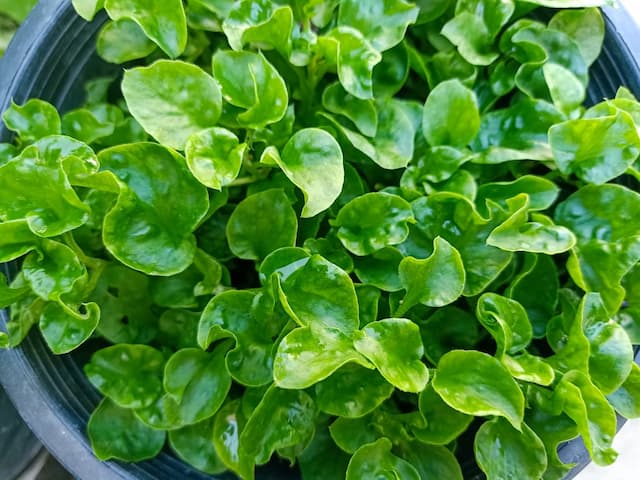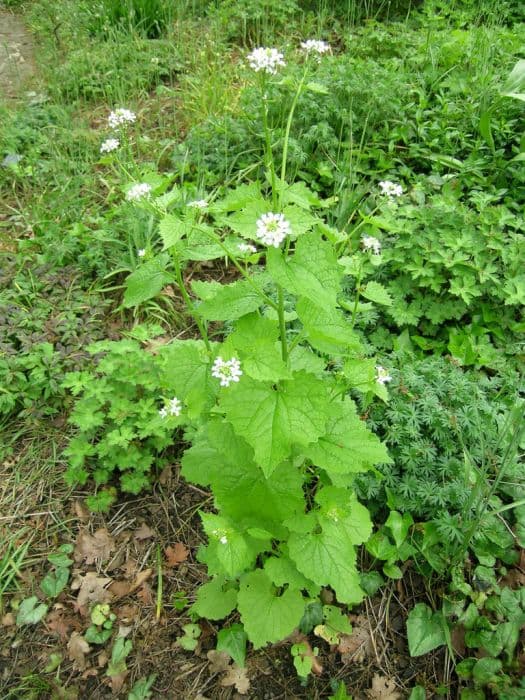Winter Orchid Wallflower Erysimum Winter Orchid
![wallflower [Winter Orchid]](/_next/image?url=https%3A%2F%2Fplants-admin.emdemapps.com%2Fimages%2Fplants%2F%2Fimages%2F604b62b20ab9a.png&w=3840&q=75)
ABOUT
The Erysimum Winter Orchid, widely recognized for its beautiful and long-lasting flowers, is a striking addition to any garden. This plant is characterized by its gray-green foliage that serves as a lovely backdrop to the profusion of flowers it produces. The flowers themselves are the main attraction on this plant, with their delightful gradation of colors: they showcase a range of hues from deep purple to soft lavender, and some blossoms may even have hints of creamy yellow at their center. Upon closer inspection, the individual flowers are small and form in clusters at the top of the stems, resembling a quaint, colorful bouquet. These clusters give the Winter Orchid an overall bushy appearance, which becomes a focal point in any landscape. As the flowers slowly open from the bottom upwards, the plant offers a continual display of vibrant colors throughout its blooming season. The Erysimum Winter Orchid's leaves are narrow, elongated, and slightly toothed along the edges. They grow densely along the stems, providing a lush texture to the plant’s structure. When in full bloom, the Winter Orchid exudes a sweet and pleasant fragrance, attracting an array of pollinators, such as bees and butterflies, which adds an additional layer of liveliness to its presence. Overall, the Erysimum Winter Orchid is a charming and attractive plant that can create an enchanting atmosphere in the garden with its alluring flowers and refreshing scent.
About this plant
 Names
NamesFamily
Brassicaceae
Synonyms
Wallflower, Winter Orchid Wallflower
Common names
Erysimum Winter Orchid.
 Toxicity
ToxicityTo humans
Wallflower (Erysimum 'Winter Orchid') is not commonly known to be toxic to humans. While it is always advisable to avoid ingesting plants that are not specifically grown for consumption, wallflowers do not contain significant toxins that would cause harm to humans if accidentally ingested in small quantities. However, it's important to note that individuals may have allergies or sensitivities to any plant, which could result in mild gastrointestinal discomfort or allergic reactions. If there is a suspicion of poisoning or an allergic reaction occurs, it is important to seek medical attention.
To pets
Wallflower (Erysimum 'Winter Orchid') is also not widely recognized as being toxic to pets. However, as with any non-food plant, it is generally recommended to prevent pets from ingesting wallflowers, as they could potentially cause gastrointestinal upset or an allergic reaction in some animals. If a pet does ingest wallflower and shows signs of distress such as vomiting, diarrhea, or unusual behavior, contacting a veterinarian would be prudent.
 Characteristics
CharacteristicsLife cycle
Perennials
Foliage type
Evergreen
Color of leaves
Green
Flower color
Mixed
Height
1 feet 6 inches (45 cm)
Spread
1 feet 6 inches (45 cm)
Plant type
Shrub
Hardiness zones
7
Native area
Europe
Benefits
 General Benefits
General Benefits- Attracts pollinators: Erysimum Winter Orchid is known to attract beneficial pollinators such as bees and butterflies, which are essential for the pollination of many plants.
- Long blooming period: This plant typically has a long flowering period, providing color in the garden for an extended amount of time.
- Drought tolerance: Once established, Erysimum Winter Orchid can tolerate periods of drought, making it suitable for xeriscaping and low-water gardens.
- Low maintenance: The plant is relatively easy to care for, requiring minimal maintenance other than occasional deadheading to promote further blooming.
- Cold hardiness: It is capable of surviving cooler temperatures, making it a versatile addition to a variety of climatic zones.
- Compact growth: With its compact size, it is ideal for small gardens, borders, and spaces where a smaller-scale plant is desired.
- Provides color in winter: As the name suggests, the Winter Orchid variety can provide vibrant blooms even in the cooler winter months in milder climates.
 Medical Properties
Medical PropertiesThis plant is not used for medical purposes.
 Air-purifying Qualities
Air-purifying QualitiesThis plant is not specifically known for air purifying qualities.
 Other Uses
Other Uses- Wallflower Ink: The vibrant petals of the Wallflower can be used to make a natural dye, which, when mixed with the right solvents, creates an ink for artistic or craft purposes.
- Colorant for Fabrics: Similar to its use in inks, the Wallflower's petals can be boiled to extract a dye that's usable for tinting textiles.
- Culinary Garnish: While not widely recognized for edible purposes, the fresh flowers of the Wallflower can add a splash of color as a garnish on salads or desserts for special occasions.
- Natural Potpourri: Dried Wallflower blossoms can be included in potpourri mixtures, contributing their delicate scent and color.
- Photography Subject: Due to their striking coloration, Wallflowers can be the focus in macro photography and garden photography, creating attractive imagery.
- Floral Artistry: Wallflowers can be incorporated into floral arrangements and particularly in the art of Ikebana, the Japanese art of flower arranging, for their structure and vivid hues.
- Eco-friendly Confetti: Dried petals from the Wallflower plant can be used as a biodegradable confetti alternative in celebrations.
- Bookmark Decoration: Pressed Wallflower flowers can be used to create decorative bookmarks, encapsulated in laminate or other preservative materials.
- Teaching Tool: Wallflower plants can serve as a living specimen for educational purposes, such as teaching botany or illustrating the life cycle of a plant.
- Plant Combinations: Gardeners may use Wallflowers to create specific color schemes or combinations in garden designs, leveraging their long bloom time for extended displays.
Interesting Facts
 Feng Shui
Feng ShuiThe Wallflower is not used in Feng Shui practice.
 Zodiac Sign Compitability
Zodiac Sign CompitabilityThe Wallflower is not used in astrology practice.
 Plant Symbolism
Plant Symbolism- Resilience and Survival: The Erysimum, commonly known as 'Wallflower,' often symbolizes resilience and survival as it's known to bloom in conditions where many other plants might struggle.
- Faithfulness and Fidelity: Wallflowers have historically signified faithfulness and fidelity, making them ideal in contexts where loyalty or steadfast commitment is being expressed.
- Adversity and Solitude: Because the name 'Wallflower' can also refer to a person who may feel shy or excluded, the flowers can represent overcoming adversity or finding beauty in solitude.
- Enduring Love: With its long bloom period, the Wallflower can symbolize everlasting or enduring love, indicating a relationship that withstands the test of time.
 Water
WaterThe Wallflower 'Winter Orchid' should be watered deeply but infrequently, typically when the top inch of soil feels dry to the touch. In general, this might mean watering once every 7 to 10 days during active growing seasons like spring and fall, but this can vary depending on climate and weather conditions. When watering, aim to provide enough water so that it reaches the roots without leaving the soil waterlogged—this might be approximately one gallon depending on the size of the plant and pot. During winter, reduce the frequency to account for slower growth and lower evaporation rates.
 Light
LightWallflower 'Winter Orchid' thrives in full sun to partial shade. The ideal spot for this plant is an area where it can receive at least six hours of sunlight a day. However, if you're in a particularly hot climate, providing some afternoon shade will help protect the plant from the intense heat.
 Temperature
TemperatureWallflower 'Winter Orchid' can handle a wide range of temperatures, but it performs best when daytime temperatures are between 55 and 75°F. It can withstand temperatures down to about 20°F, but should be protected from severe frosts. Keep in mind that in areas with very hot summers, the plant may go dormant if temperatures consistently exceed 85°F and should be provided with some shade to help manage the heat.
 Pruning
PruningPruning Wallflower 'Winter Orchid' encourages bushier growth and more blooms. It is best to prune in late winter or early spring before new growth starts. Remove any dead or damaged stems and cut back up to one-third of the plant to stimulate new growth and flowering. Pruning is often needed yearly to maintain an attractive shape and promote the health of the plant.
 Cleaning
CleaningAs needed
 Soil
SoilWallflower 'Winter Orchid' prefers well-draining soil with a pH range of 6.5 to 7.5. A good soil mix for this plant would consist of loamy garden soil, peat, and grit such as perlite for improved drainage. Add a slow-release fertilizer at the time of planting for nutrient enrichment.
 Repotting
RepottingWallflowers such as 'Winter Orchid' typically do not require frequent repotting and should be repotted every 2 to 3 years or when it has clearly outgrown its current pot. Spring is the best time for repotting to minimize stress on the plant.
 Humidity & Misting
Humidity & MistingWallflower 'Winter Orchid' tolerates a wide range of humidity conditions but does best in moderate humidity. Average room humidity is often sufficient for healthy growth, avoiding excessively dry or damp conditions.
 Suitable locations
Suitable locationsIndoor
Place 'Winter Orchid' in bright light and fertile, well-draining soil.
Outdoor
Plant in full sun to partial shade in fertile, well-draining soil.
Hardiness zone
7-10 USDA
 Life cycle
Life cycleThe Erysimum 'Winter Orchid' or Wallflower, starts its life cycle with germination, which occurs when conditions are moist and warm, typically in spring or fall. Following germination, it enters the vegetative stage where it develops a rosette of leaves at the base, and as it matures, it grows taller and forms branching stems. The next stage is the flowering phase, usually in late winter to spring, when the plant produces vibrant orange to purple flowers attracting pollinators. After pollination, Erysimum 'Winter Orchid' produces seed pods that mature, dry, and eventually release seeds, completing the reproductive phase. The plant is a perennial, so it may enter a period of dormancy during extreme cold or heat, depending upon the climate, but it will resume growth in favorable conditions. The cycle continues as new seeds germinate and the plant may also spread through the growth of offshoots from the parent plant.
 Propogation
PropogationPropogation time
Spring to Summer
Propogation: The most popular method of propagating Erysimum 'Winter Orchid', commonly known as Wallflower, involves taking semi-ripe cuttings during late summer. To do this, you should select a healthy, non-flowering shoot and cut a 3-4 inch (approximately 7.5-10 cm) section just below a leaf node. The leaves from the lower half of the stem should be removed, and the cut end can then be dipped into a rooting hormone to encourage root growth. The prepared cutting should be inserted into a pot filled with a mix of peat and perlite or a similar well-draining rooting medium. The pot should then be placed in a warm, bright place out of direct sunlight and kept moist until roots develop, which typically takes 4-8 weeks. After the cuttings have rooted, they can be potted into individual containers and grown on until they are ready to be planted out.









